How much can a city change in ten years? If it’s physical appearance we’re talking about, unless it is Dubai, Singapore or places in China, the changes – notably the skyline – in most cities are usually not too palpable. But how much can a heart change in the same period of time? Based on my experience, quite a lot.
I grew up having a perception of Jakarta as a rough, crowded city whose schoolkids seemed to know how to get themselves into trouble. When my parents and I were still living in a small town three hours’ drive west from the Indonesian capital, every now and then we would take the inter-city bus to visit some of our relatives in the hot and humid metropolis. I remember being awed by multiple layers of flyovers passing over my head, the tall buildings in downtown Jakarta, and a mall in West Jakarta which at that time felt so big it took us a while to find the exit. For more than two decades of my life, Jakarta had always been such a transient place; I never stayed longer than two weeks.
One day during my college years in Bandung, Indonesia’s third most populous city, which at the time was still a calm and laid-back place with a temperate climate, I told a few friends over lunch, “I don’t want to work in Jakarta. It’s just too hot there.” Most of them agreed that it was not a city in which they wished to live.
Then reality hit. After running an unsuccessful culinary business with three other friends in Bandung, I decided to find a job, which led me to a job fair in the city and applying for one which would require me to spend at least one year in Jakarta for training. On the day I went for the interview, I took an old public bus from a district in East Jakarta that once had a reputation as a hotspot for student clashes. As soon as I took an empty seat, I was taken aback by how stressful and gloomy everyone looked. Before I got off near the company’s office in West Jakarta, I accidentally stepped on someone’s foot and quickly apologized. In Bandung, and other places that I had lived in, this would usually be met with the words “it’s okay” and a big grin. Apparently that was not the case in Jakarta.
Back in my aunt’s house where I stayed for a few days during the interview process, as I lay in bed beneath the ceiling fan, which churned the hot air inside my room instead of providing some desperately needed freshness, I pondered whether I could survive in this city if I got the job.
I did get the job, and thanks to the kindness of a friend from college who had been living in Jakarta for a few months, I managed to find a rented space with an air conditioner within walking distance from the training location. There were thirteen other people who were in the same training batch with me, eight of us hailing from outside Jakarta, so naturally we got very close with each other and in no time the fourteen of us became a family with the six Jakartans trying to make their outsider friends feel at home. Thanks to them, my first year in the city turned out not as tough as I had imagined; in fact it was probably the year when I played a lot. One night we went for karaoke in an affluent area in South Jakarta, then headed to a nice seafood restaurant far in the coastal north and only came home past midnight. The following night we hung out at a fancy mall in Central Jakarta, went to another part of the city to have fun, then came home late again. On Friday nights we always tried new places, with three of us, including me, staying at a friend’s house in northeastern Jakarta ahead of a four-hour Mandarin class the next morning (we gave up after two months, though). Nevertheless, it wasn’t all about playing hard. Within that one year we endured some of the toughest exams we’d ever had; at one point I felt my head heating up like never before when I confronted a very difficult question. A wrong answer would have sent me back to Bandung.
After a few years living in Jakarta I reached a point when I started to appreciate the joy of traveling. I began to spend less money on buying new clothes and eating out, and more on flight tickets and experiences. I dared myself to venture out to Jakarta’s old town district, an area I had never thought of visiting before; I made a spontaneous trip with a friend to one of the idyllic islands just north of the bustling metropolis; I made an effort to visit the museums; I walked more and took public transportation more often. Not only was this a period of time when I began to see the many faces of Jakarta – beyond its glitzy malls and fancy restaurants – but it was also when I began to see its appeal, beyond the perennial traffic congestion and flooding the Indonesian capital is notorious for.
Jakarta’s past governors had left their own marks on the city’s development. Among the most controversial figures was Ali Sadikin, who served as governor from 1966 to 1977. He is remembered for his iron-fist approach in clearing out slums, banning cycle rickshaws, and discouraged potential arrivals from coming to the city, among other things. On the other hand he was also an advocate for family planning to curb the population boom, as well as the person behind the city’s first advocacy group for transgenders and a legal aid organization for the poor.
I moved to Jakarta in 2008, a year after Sutiyoso stepped down as its governor. In 2004 he introduced TransJakarta, South and Southeast Asia’s first bus rapid transit (BRT) which was inspired by Bogotá’s TransMilenio. Over the years TransJakarta’s network, Indonesian capital’s first-ever decent mode of public transit, has been further expanded to reach far corners of the city, and it is now considered the largest BRT network in the world with more than 230 kilometers of so-called corridors.
From 2014 to 2017 under the governorship of Basuki Tjahaja Purnama, more commonly known as Ahok, TransJakarta’s Chinese-made buses, of which many had problems in the past, were replaced by more reliable Japanese and Swedish buses. The ethnic Chinese Christian governor of majority Muslim Jakarta in fact carried out the most extensive infrastructure projects the city has seen in generations. Suddenly many parts of Jakarta were brimming with the construction of new flyovers, underpasses and light rail lines, as well as an underground metro system (begun under his former superior Joko Widodo who had been elected president) to alleviate some of the worst traffic of any city in the world. However, despite this and all the social programs rolled out under his administration, he was defeated in a deeply-divisive election last year.

James taking a photo of Wipe Out, depicting the struggles of Chinese Indonesians with their identities
Two months ago Jakarta turned 491. Some cities around the globe have experienced far greater progress within the same time span, although others have actually become worse than Jakarta. While a lot of problems persist in the Indonesian capital, there have been significant improvements, and many of them can’t be seen in just a short period of time. In the early 2000s, to an outsider like me Jakarta sounded like a very dangerous place with its high crime rate, including brazen daylight robbery and pickpocketing. However, as the Indonesian economy gradually recovered from the devastating impact of the 1997/98 Asian Financial Crisis and as more jobs were created, crime seems to have been significantly reduced, at least from my observation since moving to the city.
One of my cousins who has been living in Europe for more than two decades attested to how things were actually improving upon a visit to Jakarta in 2007, despite the usual pessimism that was once prevalent not only in the city, but also the the whole nation after the crippling financial crisis. “People are now actually wearing seat belts when they drive,” my impressed cousin told me. She remembered how no one cared about safety when she was still living in the city. A friend’s boss who is a Canadian and has been continuously living in Indonesia for 17 years told him about the improvements he has been witnessing in the Jakarta metropolitan area, although at a pace that is often behind people’s hopes and expectations.
This month marks my tenth year living in this ever busy capital of Indonesia. Its enormity still intimidates me from time to time, its political landscape remains frustrating, and the unsolved problems (such as the traffic) exhausting. But over the decade of my love-hate relationship with this city I gradually began to call home, I see how its energy keeps many of its residents from moving somewhere else. Other cities (like Singapore) may be a lot cleaner, more organized, and safer. But underneath the chaotic scenes that have become synonymous with Jakarta lies its true charm and beauty.
Behind my office in a tall glass building lies a densely packed neighborhood where locals and those who come from far corners of Indonesia live side by side, all driven by the same dream of finding better opportunities for themselves and their children. Every time I walk down its narrow streets I can’t help but feel nostalgic for the close-knit communities I was once part of in the small cities where I grew up. Despite having modern skyscrapers in their backyard, instead of verdant forests or towering volcanoes, these people still abide by a very Indonesian way of life where caring for their family and neighbors are of utmost importance in life. Neighborhoods like this are also a good place to look for authentic and cheap Indonesian dishes which would cost three to four times more at the nearby malls.
Jakarta’s boundless energy is often what drives people to come and stay for an extended period of time (some call them crazy). However, like its nickname the Big Durian, this energy is more of an acquired taste; it excites some, but exhausts others. In a heartfelt post, my perennial travel buddy James who has been living in the city for more than two years summed up his experience living a harder, but more exciting, life in Jakarta compared to his old life in Hong Kong. And he’s not the only one who finds the appeal of the megalopolis. Despite the series of terror attacks that have taken many innocent lives in the city since the early 2000s, which have now been significantly reduced in both frequency and intensity, more and more foreigners appear to have moved and settled in Jakarta for good, bringing their own cultural offerings to the city. While Japanese, Korean, Italian and Dutch restaurants have entered the Indonesian market for quite some time, those focusing on cuisines from other parts of the world are starting to pop up, adding delectable flavors to the already vibrant culinary scene of the city. Greek, Spanish, Brazilian and Nikkei (Japanese Peruvian) restaurants now provide tantalizing alternatives to sushi, bulgogi, pasta and bitterballen for Jakartans.
It is both encouraging and sad to see the construction of a light rail line near where I live; on the one hand Jakarta desperately needs to have an extensive railway network for its more than 10 million residents to encourage them to switch to public transport. However, on the other hand the lack of funds to build them underground means a number of tall, majestic trees that once lined an avenue in the city had to be cut down to make way for the elevated rail line. Deciding what’s best for Jakarta and its people really is a herculean task for whoever stands at the helm of the city’s administration. But when politics becomes too nauseating, fortunately Jakarta provides a growing number of venues to channel one’s talent, to excite one’s intellectual side, or just to wind down and relax with friends.
Dubbed as Indonesia’s first international modern art museum, Museum of Modern and Contemporary Art in Nusantara (MACAN – which also means leopard in Indonesian) is a cultural oasis in the western part of the city. Showcasing artworks by Indonesian painters and sculptors, as well as international names like Yayoi Kusama, the museum became an instant hit as soon as it opened its doors last year. Meanwhile, in Taman Ismail Marzuki – a decades-old cultural center at the heart of the city inaugurated by Ali Sadikin – aspiring young talents regularly perform, including a friend of mine and his boyfriend.
Jakarta used to be a transient place when I was a kid, but now it is only transient in the sense of how I feel toward it. Whenever my affection for the city grows, it knows how to let me down. But before I go too far down, it also knows how to lift me up and cast a ray of hope. During my ten years living in the city I have walked a good ten kilometers at night to get home after a heavy rainstorm, swam the turquoise water of the small islands off the city’s northern coast, waded through knee-high floodwaters on my bike going back from work at the height of rainy season, made friends with some of the kindest and most inspiring people in my life and learned how to keep a safe distance from toxic individuals, experienced two earthquakes while at the office, fallen in love, got stuck in the most frustrating traffic jam when I was forced to relieve myself with the aid of an empty bottle inside my car, become a more spontaneous person, expressed anger like I had never done before, and learned how far discipline and commitment can get me in life. My feelings toward this city have been and will always be a work in progress, but one thing seems to be more certain than anything: life in Jakarta is never boring.
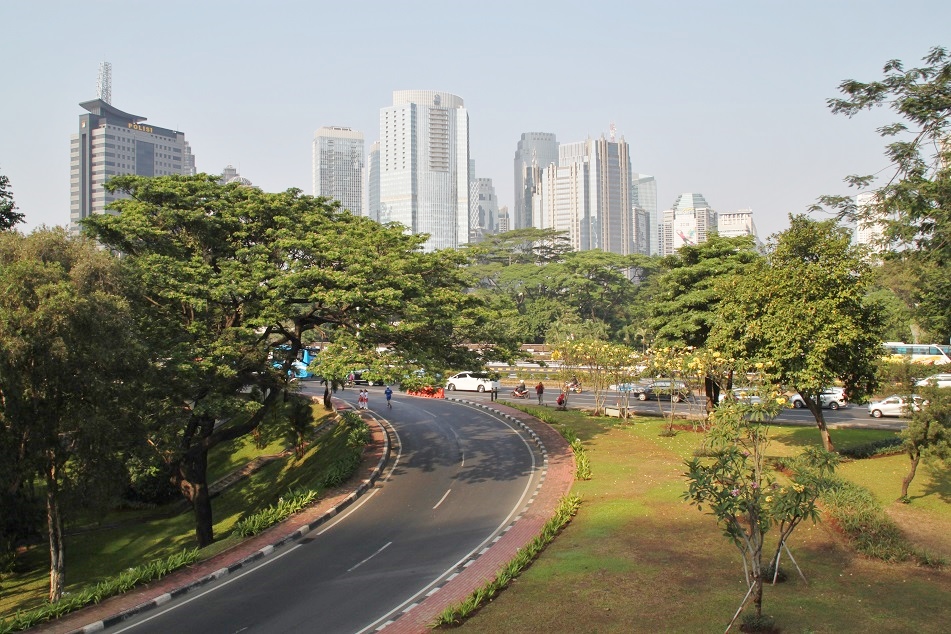


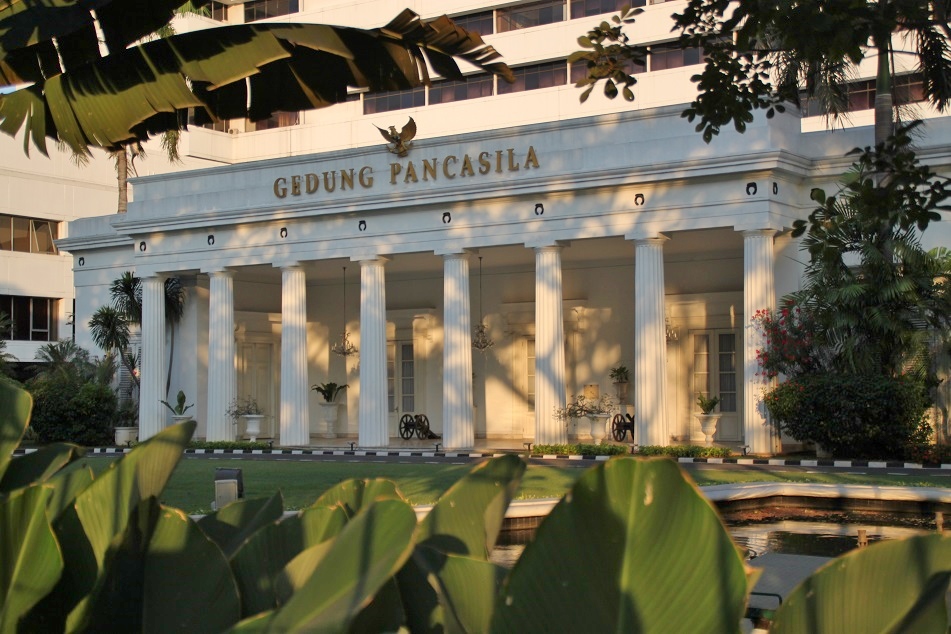


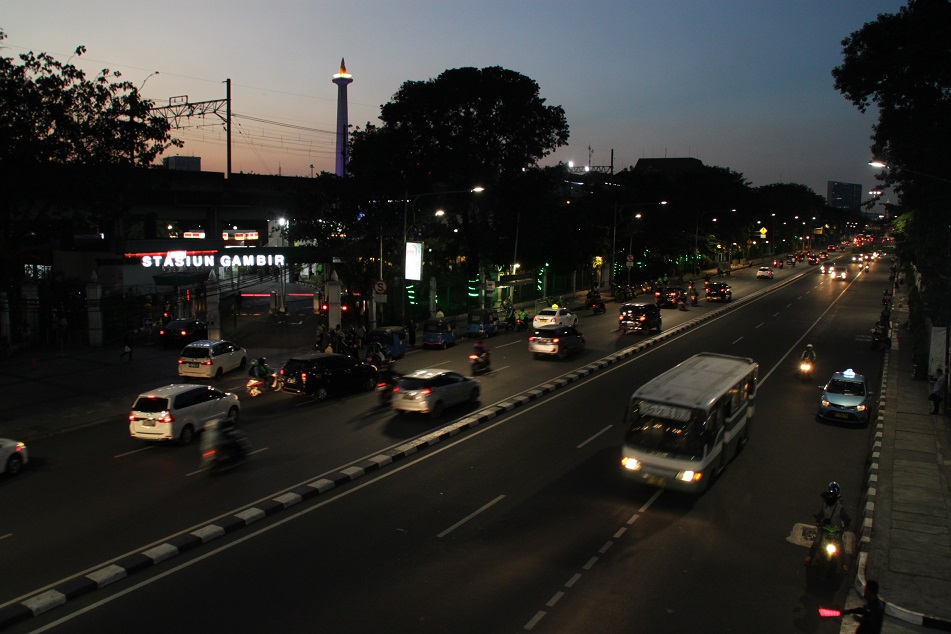




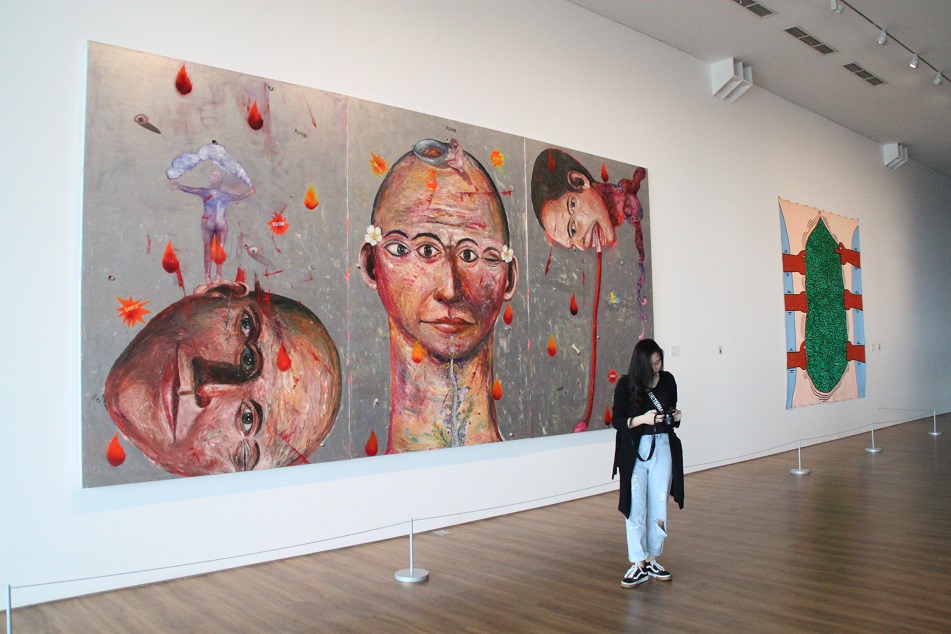






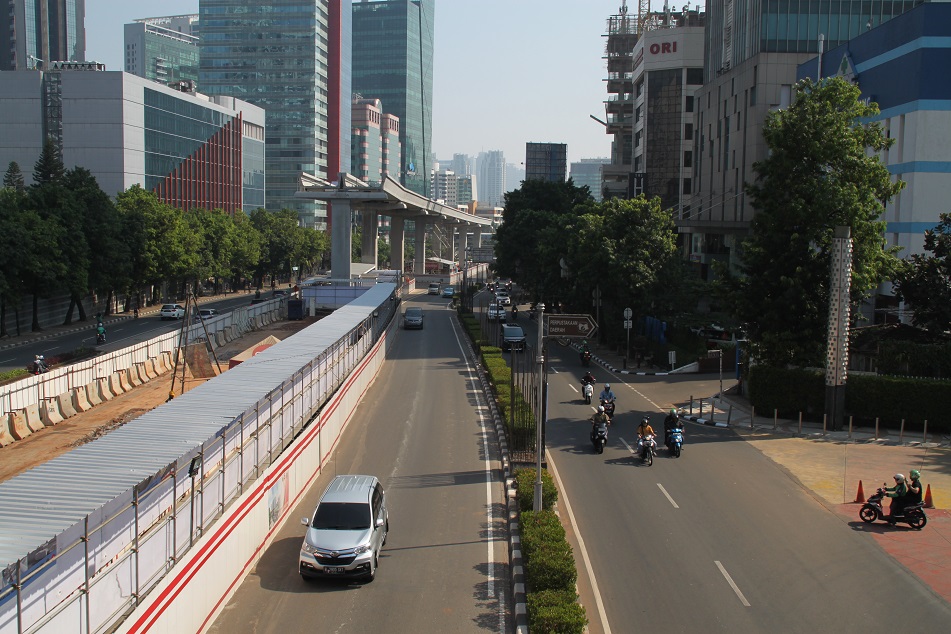





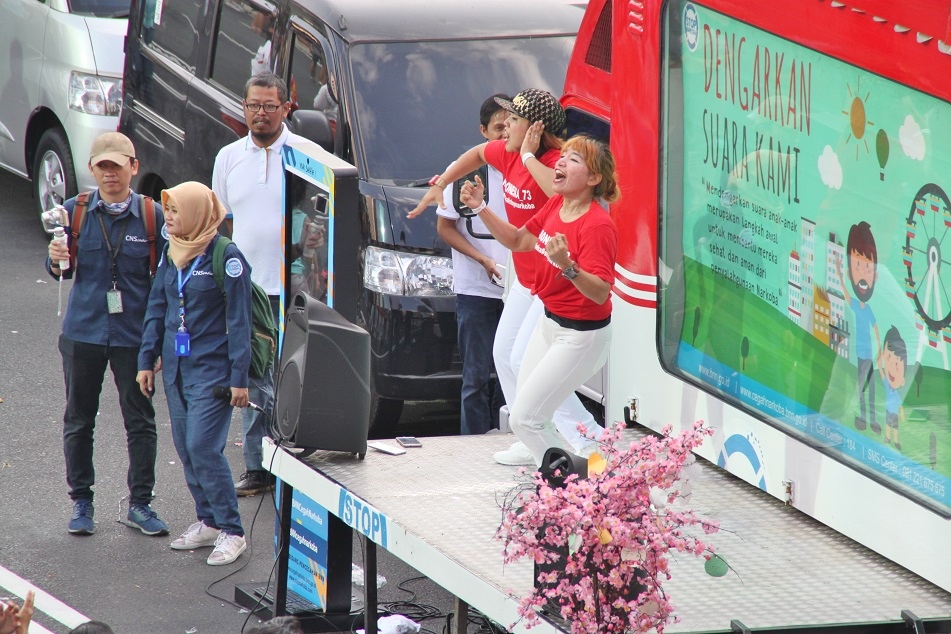


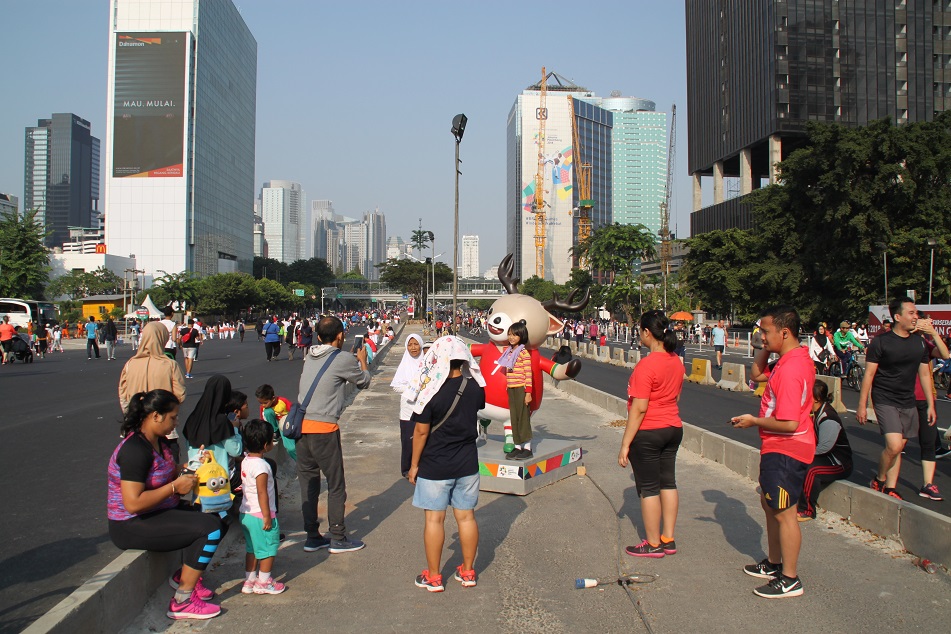


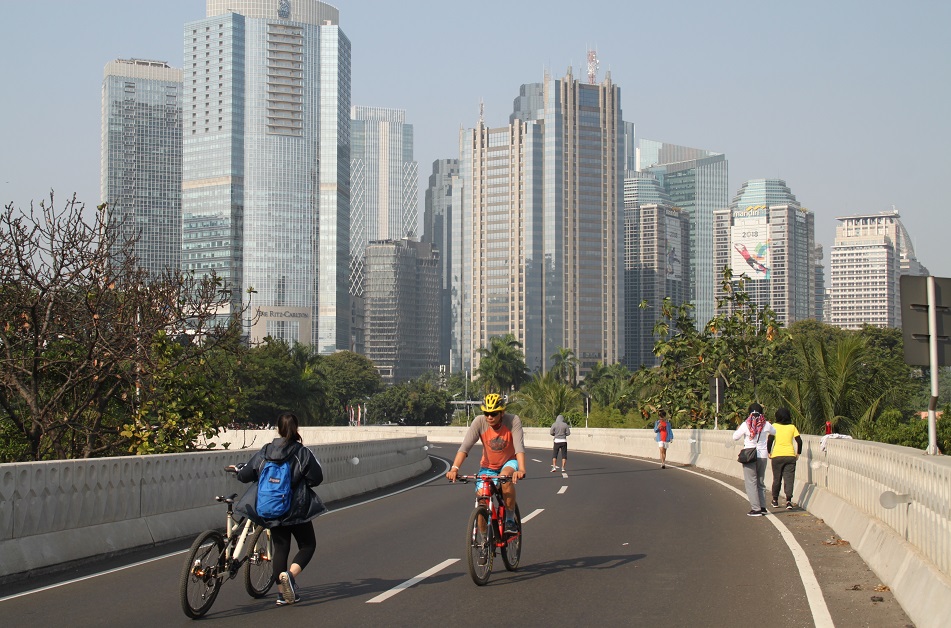


Reblogging this to my sister site “Timeless Wisdoms”
LikeLike
Thanks for the reblog, Ana!
LikeLike
My pleasure 😊
LikeLike
Pingback: 10 Years in Jakarta – Timeless Wisdoms
I just about felt like I was there. I think, despite your love/hate relationship with it, that this city has been good to you. And probably good for you. I understand the love/hate part – especially having recently spent a little time in even bigger cities in Japan and China. Just overwhelming. Still it sounds as if Jakarta’s doing very well. You too!
Alison
LikeLike
I can’t think of a better place to live here in Indonesia. Some people may find it hard to believe, but this city has something other big cities in the country don’t. However, that is not to say that I don’t want to move to a better city — one with a better public transportation system and cleaner air, for instance. The only big city in China that I’ve been is Guangzhou, and I happened to stay in its quieter neighborhood and skipped the city center altogether. As for Japan, I have yet to visit Tokyo, a megalopolis that fascinates some and overwhelms others.
LikeLiked by 1 person
Wow! What a comprehensive overview on the city of Jakarta! Everyone planning to visit this amazing city should bookmark your post, Bama.
LikeLike
Thanks Peter. For this post I planned to take some more photos from the many corners of Jakarta. However, due to the lack of time I had to stick to those that are not too hard to reach from where I live.
LikeLiked by 1 person
You have captured the disposition of the city alongside its composition over the years. It did bring to my mind the memories of Mumbai where I was nestled for about a decade. It’s always a treat reading your posts.
LikeLike
I think when I have the chance to go to India for the second time Mumbai will be one of the places I’ll visit. I’ve been intrigued by everything I have read about it; the heritage buildings, the ancient sites around it, the city center, Bollywood, and many more. Thanks for reading!
LikeLiked by 1 person
Bama, for a person (like me) who hasn’t been to Jakarta, your description of the city and the pictures in this post is so very contradictory. I can almost feel a chilly breeze when I imagine a walk along Sudriman CBD or South Jakarta district. And while scrutinizing all the people in the above images I feel that they are all much polite rather than rude. Everything (in your pictures) look serene.
I felt this post as an apt tribute to the city and I am sure readers like me will develop an urge to visit Jakarta by the time they finish reading it.
LikeLike
That’s because I took all of the photos in this post on the weekend as opposed to the weekdays when Jakarta’s streets are far more challenging to navigate. And the fact that every Sunday the city’s main road is closed to traffic helps people relax a little more, have more fun with friends and family, and do some exercise without having to worry about cars and motorbikes. On the weekend Jakarta does show its other side.
LikeLike
What a wonderful love-letter to your city. I’ve been thinking of visiting Jakarta, and this sort of lights a fire under that simmering thought.
LikeLike
Come visit before rainy season starts when torrential downpours often cause even worse traffic and flooding in some areas — although the latter was significantly reduced under the previous governor’s administration.
LikeLiked by 1 person
I thought August would be the rainiest month. But I didn’t think about it; you are too far south for the Asian Monsoon. Wonderful to know that.
LikeLike
Rainy season in Jakarta usually starts around November with January and February being the wettest months.
LikeLiked by 1 person
Yes, that makes summer the easiest time to visit.
LikeLike
I think those years right after college are some of the hardest, at least they were for me, and you moved to a massive city right at that time. It would have probably been a major adjustment no matter when you moved there, but at that age it was probably even more intense. You are the city grew up together, it seems.
They are building a sky train 1 km from my house which will be awesome in 5 to 25 years when it is complete, but for the time being the road went from 8 congested lanes to a four lane parking lot and trees and buildings had to be taken out. It looks like those old trees in Jakarta got it worse though.
Thanks for sharing such a personal post.
LikeLike
That friend of mine from college who helped me find a rented space in West Jakarta passed away four years ago, and some of the people I had training with in my first year in the city have changed (or maybe it is me who changed). I have experienced working with a wide spectrum of bosses, from a very sensitive one to a very quiet person to a super fun younger boss. You are right when you said the city and I grew up together, that’s why the more I live here the more I become a part of it.
Waiting for construction work of mass transport projects to be completed can be really frustrating because here in Indonesia they’re usually delayed by months even years. However, when signs of near completion become more and more visible, the excitement returns. Hopefully that sky train near where you live will be completed in five years, not in half a century (which is pretty much the time it took for Jakarta to finally have its first MRT line).
Glad you enjoyed this, Jeff, and hey, your blog has been very quiet lately!
LikeLike
I read a thing about mass transit projects and why they are always slow and over-budget – the politicians who start them aren’t the ones who complete them, so they always over-promise on price and time. Makes sense. Yes, my blog has been quiet, but I have had a very busy summer. I hope to start posting again soon and rejoin the blogging/commenting world as well. I need to read many of your old posts.
I thought about your story of having to pee in a bottle in a traffic jam. That is the worst/funniest way to sum up traffic there.
LikeLike
That is true, although having an autocratic government — based on Indonesia’s experience — will only create new problems. I can’t wait to read about your travel stories again, Jeff! Oh and I really miss your super hilarious MS Paint illustrations.
LikeLike
Wow 10 years living in Jakarta! I have to agree that not everything about Jakarta is negative. My memory of Jakarta is one filled with laughter and fun with my friends – most are from outside of Jakarta so we stuck together as we tried to conquer the city :). I really applaud those who live in Jakarta though, I don’t think I could ever live there again, I am too in love with Jogja 😀
LikeLike
It’s challenging at first, but once you tune in to the city’s rhythm things get a little better every day. I have fond memories of Jogja, although on my last visit last year the city seemed to be growing at a breakneck speed with mass tourism as its main growth engine. I wonder what you think of it.
LikeLiked by 1 person
Ah yes that! Jogja is getting crazy with all the tourists and the growing population of motorbikes. I have found ways of trying to stay away from touristy areas and I try not to go out too much especially during the holidays. I really wish local government improve our infrastructure. It is definitely affecting us locals 😦
LikeLike
Exactly. If nothing is done to improve the city’s old infrastructure, in a few years’ time I’m afraid Jogja’s traffic won’t be too different from that of Jakarta, although the upside is you can always go to those waterfalls, paddy fields, and other places around Jogja to wind down.
LikeLike
In the same year you moved to Jakarta, I moved to Bandung from my calm hometown, Yogyakarta. Then in the end of 2013, I followed your step moving to the capital.
We were the same. I was accepted by a national retail company as a Management Trainee, had 3 months of training at its headquarters in Kemayoran, Central Jakarta. I lived in an apartment with the fellow trainees — some were in the same batch, while some were our seniors. There were 10 (or more?) of us, living in an apartment unit which turned into 3 or 4 dormitory rooms. Your story reminds me of my story, Bama 🙂
I enjoyed your pictures showcasing the Jakarta’s skyscrapers. I always love seeing skyscrapers and city landscape.
LikeLike
Your story does sound quite similar with mine, Nug. I guess many people came to Jakarta to start their lives anew with a similar pattern. How do you feel about the city after having been living here for five years now? I wonder if you have explored more of Jakarta than me — sometimes I feel too lazy to explore it after a very busy week.
LikeLike
Before and after my short 4 months live in Jakarta, I visited the capital back and forth to see my friends and… to date 😂😂😂
I lived in Kemayoran for 3 months and then a month in Ancol, Northern Jakarta.
And in 2013, I lived in a month in Tebet for internship.
I’m not sure if I explored Jakarta more than you. But I visited many neighborhoods of every Jakarta cities.
LikeLike
These days I don’t explore Jakarta as much as I want. Only when the skies are blue do I go out with my camera. Speaking of Ancol it’s a part of Jakarta I need to return sooner than later; the last time I went there was more than five years ago!
LikeLike
Last time I went to Ancol is last year, I think it’s the second semester in 2017. Ancol is actually adorable. I mean, we get the sea, skyscrapers, trees, and pedestrian area in a frame.
LikeLike
I guess when the weather is nice I should go there again.
LikeLike
Yeah, you should 🙂
LikeLike
That’s the beauty of living in a big city, Bama. It definitely opens the mind, and it’s something many ought to try, before sticking there forever or, perhaps, move someplace else.
LikeLike
Its diverse population, generally more open-minded people, plethora of opportunities, and convenience to get what I want are some of the things I love the most from living in a big city like Jakarta. I enjoy visiting quieter and more secluded places every now and then, but I prefer being in a big metropolis despite all the usual downsides.
LikeLiked by 1 person
I visited the city a long time back and my impressions were the same as yours as a child. I can’t recognize anything of the Jakarta I saw from your photos. I’m almost tempted to revisit.
LikeLike
Maybe you should wait until at least the city’s LRT lines and first MRT line are completed (the latter is scheduled for next year).
LikeLiked by 1 person
Thanks
LikeLike
Bama, this is such a wonderful post. I’ve never been to Jakarta and in my mind it’s always been too massive and overwhelming to think about exploring. But you’ve so skillfully revealed its endearing qualities while telling us about your own experiences within it. I felt like I was riding the buses and walking the streets alongside you, with my fingers crossed for you as you applied for the job. 🙂 The modern art museum looks amazing and I particularly love the sunset photo of the mosque and cathedral. I hope someday we’ll get to Jakarta — to meet you and explore this thriving melting pot of culture and personality. Brilliant post!
LikeLike
Thanks Kelly. Jakarta is a massive, sprawling metropolis, and with such bad traffic on a weekday getting from one place to another within the city can take longer than getting to another city some kilometers away. Jakarta’s charms can only be found and appreciated only if one is willing to dig deeper, something I only began doing after living here for a few years. There are still interesting parts of the city which I have yet to visit (maybe I’ll write about them in a future post), but sometimes I’m more drawn into those I’m familiar with — I shouldn’t be too complacent, I know. When you get to chance to return to Southeast Asia, you know Jakarta is just a short flight away from whichever city you’re in. 🙂
LikeLiked by 1 person
Bama, what a beautiful retrospective of your 10 years in Jakarta; really lovely post! I enjoyed the way you interwove your personal experiences and the development of the “Big Durian” during this period. I can imagine how intimidating it must have been for you at the start. I was certainly intimidated when I visited back in ’91, and what I see from your photos is a very different city. I’m impressed that the main thoroughfare closes to vehicular traffic once a week (too bad about those trees though).
LikeLike
Thanks Caroline. My perception toward Jakarta slowly changes as I age (so does my view on many aspects of life). Early 1990s was the time when I quite frequently visited my relatives in the city and since then some things still look the same more than 20 years later, although many have completely changed. As the city gets older, it faces even greater challenges — including its sinking which, if not addressed properly and quickly, can potentially affect millions of the city’s residents.
LikeLiked by 1 person
Beautifully written and captured 🙂
LikeLike
Much appreciated, Dixie! Glad you enjoyed this post.
LikeLike
Entah kenapa ya, kalimat “aku gak pengen tinggal/kerja di bla bla bla” itu sering kali berbalik memakan diri kita sendiri.
Dulu jaman aku masih SMA di Bogor, setiap kali pergi ke rumah bu de di Pasar Minggu, dan melewati Stasiun Tanjung Barat, aku selalu berpikir kok ya ada orang yang mau tinggal di daerah itu. Aku sih gak bakal mau. Dan secara umum, juga aku gak mau tinggal di Jakarta. Dengan segudang alasan ketidaknyamanannya.
Eh ndilalah, beberapa tahun kemudian ketika kuliah, aku malah ngekost di area Tanjung Barat. Dan betah banget, yaaa meskipun karena ada alasan khusus sih 🙂
Trus, supaya aku bisa tinggal di London (misalnya), apakah aku harus mancing-mancing dengan bilang kalau aku gak suka kota itu apa ya? 😀
LikeLike
Gak cuma soal kota tempat tinggal aja sih kayaknya. Aku banyak menemukan contoh orang yang dulunya gak suka sama seseorang, gak suka sama suatu pekerjaan, dll ehh malah akhirnya suka sama orang itu/melakukan pekerjaan itu. Aku inget banget waktu masih dalam masa interview di tempat kerja yang pertama, pas aku numpang nginep di rumah budeku aku mikir, ya ampun Jakarta kok panas dan gerah banget gini ya? Aku bisa bertahan gak ya… Maklum dari kecil aku selalu tinggal di kota yang gak pernah terlalu panas.
Kamu cari hal yang bikin kamu benci London, Bart. Terus inget-inget terus, hehe.. 😀 Siapa tau…
LikeLiked by 1 person
Lamun ceuk urang sunda mah eta “dipoyok dilebok”. Tapi ya mungkin, bisa jadi cara pandang kita berbeda ketika pertama kali melihat sesuatu/seseorang. Terkadang butuh kenalan dulu khan, biar jadi suka #eeaaa
Hahaha, kayanya itu pengalaman mikir bakal bertahan atau nggak di Jakarta nya, mirip lah kita. Tapi kalau dirasa-rasa, ya memang Jakarta berubah banyak sih belakangan ini.
Iya Bam, aku benci London. Soalnya dilarang jalan ke sana sendirian 😀
LikeLike
Ealah dia curcol.. 😀 Ya semoga suatu saat pas ada kesempatan ke London gak perlu jalan sendirian, hehe.
LikeLiked by 1 person
Aamiin 😀
LikeLike
What a beautiful recount of your 10 years in Jakarta. It sounds like you have learned and lived in Jakarta. Big cities have their negatives but I think your last sentence sums it up: life is never boring. I loved being back in a big city again when I moved to Lodz, Poland after my 2.5 years of studying in a very small town in central Finland.
It’s admirable how you’ve taken steps to understand your new home better by learning more about its history, visiting the museums, making new friends with locals and alike. Your photos are beautiful, they remind me a bit of Kuala Lumpur. I like all that greenery in the city, the city where I grew up until 18 (Kathmandu) has very little greenery as you might have noticed from your visit there. It makes me sad when I visit, looking at all the randomly built houses and buildings with almost no greeney. Sadly Kathmandu is not a good place to live in terms of quality of life, although it does offer the country’s best facilities and infrastructures. We have a very long way to go in Nepal.
LikeLike
I have reached a stage when every time I’m on a trip away from Jakarta, I usually start missing it after a few days. Strange I know, but that’s how much the city has grown on me.
I have good memories of Kathmandu, although I know so many things can be improved to make its residents’ lives better. Lucky many of the city’s beautiful Newari structures with the signature exquisite wood carving still stand today despite the big earthquake three years ago. Jakarta has lost some of its pretty old buildings, although luckily the awareness of the importance of their preservation came quick enough before everything was razed to make way for new offices and malls.
LikeLike
Very interesting to hear a personal account of what is like living in Jakarta. I was just reading an article about Jakarta since it’s been on the news lately and was wondering what it would be like living there. Thank you for sharing this exciting personal account about your time living there.
LikeLike
Oh I didn’t expect Jakarta to be on the news in your part of the world. I’m curious what has been reported about the city on North American media. Glad you enjoyed this personal account of mine, Liz. I’m sure there are still a lot of things in the city that I can write about one day.
LikeLiked by 1 person
Yes, several articles have been on the news lately about Jakarta being the fastest-sinking city in the world and if it goes unchecked parts of the city could be entirely submerged by 2050. I read this on BBC news, but several American newspapers such as NY Times have written articles about this. I’m hoping this can be resolved as it looks that the problem has been going on for decades.
LikeLike
Unfortunately that is true. A giant sea wall is currently under construction in the north of the city with the Dutch providing some technical assistance. However, such megaproject is always prone to controversy and we don’t know how much longer we have to wait for its completion — not too late hopefully.
LikeLiked by 1 person
What a fine piece of writing here, life and details. Very interesting to read about Jakarta and honestly your writing makes me take a step back and rethink what I’m doing on my blog (step it up!) – inspirational!
LikeLike
I’m so glad this particular blog post has inspired you to write more; blogging really is about sharing stories and passing on inspirations. Thanks!
LikeLiked by 1 person
What. A beautiful post about JAKARTA. Makes it sound like. A person.
LikeLike
That’s so kind of you! To me a city is very much like a living organism — it continuously changes over time. Some grow, others decay.
LikeLike
Bama, I really enjoyed reading this tribute to your (and mine too) adopted city. And I love the fact that your pictures show how Jakarta isn’t all terrible traffic jams and grime – that there is a softer, more personable side to it that most outsiders don’t usually hear about. Hopefully the MRT and LRT lines both open as scheduled next year; they will be a much-needed boost for public transit and Jakarta can happily lose its title as the world’s biggest city without a metro system.
LikeLike
Your views on many aspects of Jakarta had actually helped me see it in a different way, so the credit goes to you as well. Sometimes to see the beauty of a place, or anything, one needs to listen to what those unfamiliar with it have to say. Speaking of the MRT and LRT lines, I won’t be surprised if their completion is delayed. However, let’s hope that by next year we’ll be able to go around the city using those trains.
LikeLiked by 1 person
Hello Bama! I have nominated you for the Blogger Recognition Award-https://lotusinmud.com/2018/08/15/blogger-recognition-award/
Although it’s not a compulsion and entirely your choice to participate. Thanks and keep writing.
LikeLike
Really appreciate your kind gesture, Hariom. And thanks for reading my blog posts!
LikeLike
Sebagai warga negara Indonesia, saya baru sekali berkunjung ke Jakarta. Itupun belum sempat menjelajahi Ibukota tercinta ini. Namun saya bangga sudah pernah seumur hidup sudah menginjakkan kaki di sana. 🙂
LikeLiked by 1 person
Hi Rafi. Kalau saya lihat blognya asalnya dari Sulawesi Selatan ya? Memang Jakarta punya daya tarik tersendiri bagi warga Indonesia yang berdomisili jauh dari ibukota kita ini. Semoga suatu hari nanti ada kesempatan lagi untuk ke Jakarta ya supaya bisa mengeksplorasi tempat-tempat menarik di sini.
LikeLiked by 1 person
Wow! I happened upon this blog and I am really happy I did. The description of the city and its growing pains really piqued my interest. I can’t fathom the enormity–I feel called to explore this city. Thanks!
LikeLiked by 1 person
Glad you enjoyed this post, Anastasia. Thanks for reading and hopefully one day you can explore Jakarta — when the traffic has improved I hope.
LikeLiked by 1 person
Interesting and beautiful piece of work. Thank you for sharing 🙂
It’s how I feel with Bangkok as well but wouldn’t be able to capture it all like you did.
Like you said, nothing is certain in this rapidly growing city, but it sure is not a boring city.
I realize that I love Bangkok too! 😀
LikeLike
The pleasure is mine. Thanks for reading! Jakarta and Bangkok do have many similarities, although the latter seems to be ahead of the Indonesian capital when it comes to public transport. Hopefully Jakarta can catch up with its Thai counterpart soon! 🙂
LikeLiked by 1 person
Nice
LikeLike
Thanks for reading!
LikeLike
Brilliant post again, Bama, asking such a perfect question: “But how much can a heart change in the same period of time? Based on my experience, quite a lot.” It is interesting to get the insights into your shifting views and feeling of Jakarta, how you seemed to make such a perfect peace with the city. It makes me reflect on my time in a new city, and it is a good exercise to take. Also, I never knew Jakarta had the nickname, The Big Durian ~ since I am addicted to this fruit, perhaps I should spend some time there 🙂
LikeLiked by 1 person
Just now I was driving to the airport, more than 30 kilometers away from the city and everything felt so calm and peaceful — it only took me an hour to go there and back to my apartment. At 3 in the morning Jakarta is a very different place, and this reminded me of your own post on Prague. A few days ago the city welcomed athletes from all over Asia for the 18th edition of the Asian Games with a spectacular opening ceremony. Watching that from TV made me proud to be a part of this great city despite its problems. Hopefully you’ll get the chance to visit Jakarta sooner than later, and when you do please drop me a message! 🙂
LikeLiked by 1 person
Bama, this is one of my favorite posts of yours! I very much enjoyed hearing about how you came to live in Jakarta, as well as the progression of your feelings toward the city. You have chosen photos that make the city look very appealing! I’ve heard the stories of all the things that turn people off of Jakarta, but you’ve made a credible argument for giving it a chance to grow on a person. I have a love/hate relationship with all kinds of places that are difficult to tolerate. The very things that make them unique and interesting are the characteristics that make them infuriating at times, so I totally get the duality of your feelings toward your adopted city.
LikeLike
Thanks Lex! But again, I took most of those photos on the weekend when Jakarta’s streets are easier to navigate and some of the city’s corners are more quiet than on weekdays. I’ve been thinking of moving to other parts of Indonesia to escape the hustle and bustle of Jakarta and live a less stressful life. But then I can’t think of a better place to live — Jakarta’s sheer diversity, general open-mindedness of the people, and constant drive to move forward are among the things that have been keeping me from moving out despite all the problems the city has been facing for many years.
LikeLiked by 1 person
Very good post, I really liked learning more about Jakarta. While it might not have a lofty reputation as Singapore or Bangkok, Jakarta seems to have a lot of character and some beauty of its own. It’s also heartening how you overcame your initial experience of Jakarta and have managed to stay there for 10 years.
LikeLike
Thank you! It really is hard to believe that despite my initial thoughts of the city, I end up living here for a decade (and counting!). I surely hope that Jakarta will catch up with its regional counterparts in terms of infrastructure, and more importantly I hope the city can find a solution to its perennial problems, including its sinking.
LikeLiked by 1 person
Bama, big cities seem to have a polarizing effect on most people, and opinions are molded by personal perspective. Your post is an interesting combination of the phyiscal view of a place, through you camera lens, and a personal view through your history there. I can imagine that it was fun and a bit cathartic to write such a detailed account of your changing views throughout your history there. Ten years is a long time, and as you mention, the city has changed and you have as well. With its endless variety and frenetic pace, even with its warts, everyone should see it at some point. This post paints a wonderful picture of the place. ~James
LikeLike
That is true, James — what people feel toward big cities is usually either love or hate. Writing this post really was cathartic for me; summarizing all the things that have happened to me in 10 years living in Jakarta helped me appreciate the city more. I remember reading Lonely Planet’s description of the Indonesian capital in my early years here: it is a city people love to hate. But now I always miss it whenever I travel. Thanks for sharing your thoughts!
LikeLike
Hi Bama, loved this story. I can relate tremendously with you. LA is very much the same kind of place with charm and intensity. I have probably written this analogy to you before but I’ll write it again – when I describe the two major cities that I’ve lived in I say that they’re a lot like a kovbasa sausage – delectable on the outside but you cut it open and you see exactly what makes it so delectable – mystery meat, cartilage, bone byproducts, etc. … in other words, not necessarily the best cuts of the animal but still necessary to make the sausage so delish. It’s kind of amazing how much a place can grow on you with the right circle. I have found my circle in LA and they are amazing support. We have so much fun together and I learn something new about them and life here everyday. I would love to visit Jakarta and I think if I do, I’d think of you and all of the interesting stories I have learned about it through you. ✌️ from LA!
LikeLike
Thanks Jess. It’s funny how you mentioned kovbasa sausage to describe LA, which is still nice compared to durian which Jakarta is often associated with — a big spiky fruit which a lot of people think its smell is like rotten cheese and taste like garlic, although I don’t agree with any of these since I find it among the most succulent and delicious fruits on the planet! 🙂 Meeting the right people, as your experience attests, can indeed improve our perception and feeling toward a city. When you do come to Jakarta one day please drop me a message!
LikeLiked by 1 person
Definitely will do!
LikeLiked by 1 person
This is a wonderful wrap up of 10 years in Jakarta, Bama. From having not wanting to move there to now calling the place home, you’ve seen the city been through ups and downs. 491 years old is a long time to be a city standing, and Jakarta seems to have changed over the years. I have visited the place at a few months a stretch about six, seven years ago and each time I am amazed by the heavy traffic yet the eagerness of everybody out to both make a living and have fun despite the terror attacks that have been happening throughout the years. When I visited, I was always warned about being careful about watching my bag and looking out for pickpockets – the air-conditioned malls were where I always felt safe hanging out 🙂 Good to hear that this isn’t as bad these days…though I’d always say you can never be too careful.
It does sound like you had quite a few experiences and stories to tell, having to walk home 10km, wading through water and meeting so many individuals. The last set of shots of the people walking along the main street is a sight to behold every weekend – everyone out and about despite the humid warm weather 🙂
LikeLike
Seven years ago I was still driving to work, and it got to point where I was so exhausted getting stuck in bad traffic congestion five days a week. When I changed job a year later I decided to move to a place closer to my office where I could walk to go to work. Then when I moved to another company I decided to ride a bicycle to work. Now my apartment is within walking distance from my office. So basically I’ve been driving-free to go to work for six years. I just can’t bear the congestion! Luckily we don’t need to wait that much longer to use the metro and LRT (next year hopefully!), and after that I hope more and more lines will be added to reduce Jakartans’ dependency on private cars and motorbikes — and make air pollution less of a problem.
Speaking of safety, as you said it’s never bad to be careful. There are still some parts of the city that I tend to avoid, but in general I feel less threatened now whenever I explore a new place in the Indonesian capital. Thanks for reading and sharing your experience!
LikeLiked by 1 person
I’ve also been in Jakarta for 10 years. When you travel to another country, you will miss Jakarta and its surrounding A LOT! 😀
LikeLike
I know, right? I used to think I would be happy to leave Jakarta. But the more I travel the more I realize the city’s charms which unfortunately are often hidden behind its grittier face.
LikeLike
Pingback: Killing Time in Semarang | What an Amazing World!
Pingback: Embracing the Southern Lifestyle | What an Amazing World!
Pingback: Exploring the World, Pandemic Style | What an Amazing World!